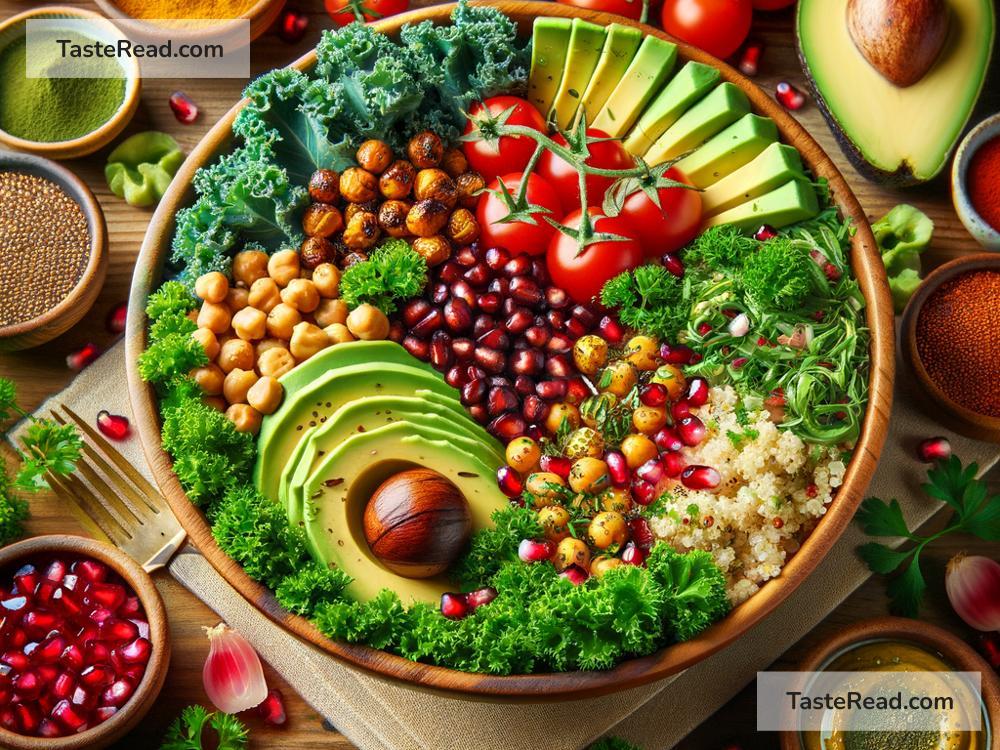The Science of Nutritional Synergy: How Foods Work Together to Keep You Healthy
When it comes to eating healthy, many people focus on individual foods or nutrients. You may have heard that foods rich in fiber are good for digestion or that calcium is essential for strong bones. But here’s a fascinating fact: the way different nutrients and foods interact in your body is just as important as the nutrients themselves. This is called nutritional synergy, and it’s one of the least talked-about yet most exciting topics in nutrition science.
In simple words, nutritional synergy is the idea that the combination of certain nutrients and foods can amplify their effects on your health. Instead of working alone, nutrients team up to boost absorption, enhance benefits, and contribute to your overall well-being. Let’s dive deeper into this concept to understand how eating a diverse range of foods can create a powerful impact on your health.
The Magic of Nutritional Synergy
You’ve probably heard the saying, “The whole is greater than the sum of its parts.” Nutritional synergy works the same way. When different nutrients work together, they can produce better results than if they were consumed on their own. This happens because your body is designed to process food as a complex mixture of nutrients, not isolated compounds.
Think about it: food isn’t just vitamins or minerals. It contains thousands of different molecules, including antioxidants, fats, carbohydrates, proteins, and phytochemicals (plant-based compounds). These elements complement each other and support your body’s natural processes.
When nutrients work together, here’s what can happen:
- Improved absorption: Some nutrients need others to be fully absorbed by your body. For example, you need vitamin D to absorb calcium properly.
- Enhanced effectiveness: Certain nutrients amplify each other’s benefits. For instance, the antioxidants in vitamin E and vitamin C work better together than they do alone.
- Balanced nutrition: Foods interact to create a natural balance. Too much of one nutrient can cause problems, but when combined with others, it can be balanced out.
Simple Examples of Food Combining for Maximum Benefits
Let’s look at real-life examples of how some foods work together to give your body the best possible outcomes.
1. Iron + Vitamin C
Iron, especially the type found in plant-based foods (like spinach or lentils), isn’t absorbed as easily as the iron in meat. But vitamin C helps your body absorb plant-based iron more effectively. Pairing iron-rich foods like beans with a source of vitamin C—like tomatoes or oranges—makes a powerful duo. For example, eating lentil soup with a squeeze of lemon can maximize your iron intake.
2. Calcium + Vitamin D
Calcium is great for your bones and teeth, but your body can only absorb it properly if you have enough vitamin D. That’s why foods that are fortified with both—like milk—are so effective. You can also pair natural sources of calcium, like kale or yogurt, with vitamin D found in eggs, fish, or exposure to sunlight.
3. Healthy Fats + Fat-Soluble Vitamins
Vitamins A, D, E, and K are called fat-soluble vitamins, meaning they need fat to be absorbed. So, eating carrots (rich in vitamin A) or leafy greens (high in vitamin K) with a drizzle of olive oil or avocado helps your body soak up all those vitamins.
4. Turmeric + Black Pepper
Turmeric, known for its anti-inflammatory properties, contains a compound called curcumin. However, curcumin isn’t easily absorbed on its own. Adding black pepper, which contains piperine, can boost curcumin absorption by up to 2,000%! This pairing is a staple in Indian cooking and has incredible health benefits.
5. Tomatoes + Olive Oil
Tomatoes contain lycopene, a powerful antioxidant known for protecting your heart and skin. Lycopene is more easily absorbed in the presence of healthy fats like olive oil. That’s why tomato-based dishes, like marinara sauce or caprese salads, are even healthier when you add olive oil.
Why a Balanced Diet Matters
The science of nutritional synergy shows us that eating a wide variety of foods is smarter than focusing on just one “superfood” or trendy nutrient. Whole foods naturally contain combinations of nutrients that work together. For example, an orange doesn’t just provide vitamin C; it also has fiber, antioxidants, and other compounds that complement each other. Similarly, whole grains combine fiber, B vitamins, and minerals, creating a balanced nutritional profile.
When you eat a balanced diet filled with fruits, vegetables, whole grains, lean proteins, and healthy fats, you’re giving your body everything it needs to thrive. You’re also unlocking the power of nutritional synergy by letting these foods interact in natural ways.
How to Incorporate Nutritional Synergy into Your Life
Here are a few simple tips to help you embrace nutritional synergy:
- Mix and match foods: Pair different types of foods together to maximize their benefits. For instance, combine salads with nuts or beans for more nutrition.
- Eat the rainbow: Fill your plate with colorful fruits and vegetables. Each color represents different nutrients, so a variety ensures you’re getting a range of benefits.
- Include whole foods: Focus on eating minimally processed foods that retain their natural nutrient combinations.
- Think about food combinations: When planning meals, remember how certain nutrients (like iron and vitamin C) work together.
Conclusion
Nutritional synergy reminds us of how beautifully complex our bodies are—and how incredible nature is when it comes to designing food. Rather than thinking about nutrition as a checklist of single nutrients, view it as a symphony where all the instruments (foods and nutrients) play together to create harmony.
So the next time you’re planning a meal, don’t just focus on individual items. Consider how the ingredients work together to nourish your body. By understanding the science of nutritional synergy, you’ll be equipped to make smarter food choices and enjoy maximum health benefits—all while savoring delicious meals!


